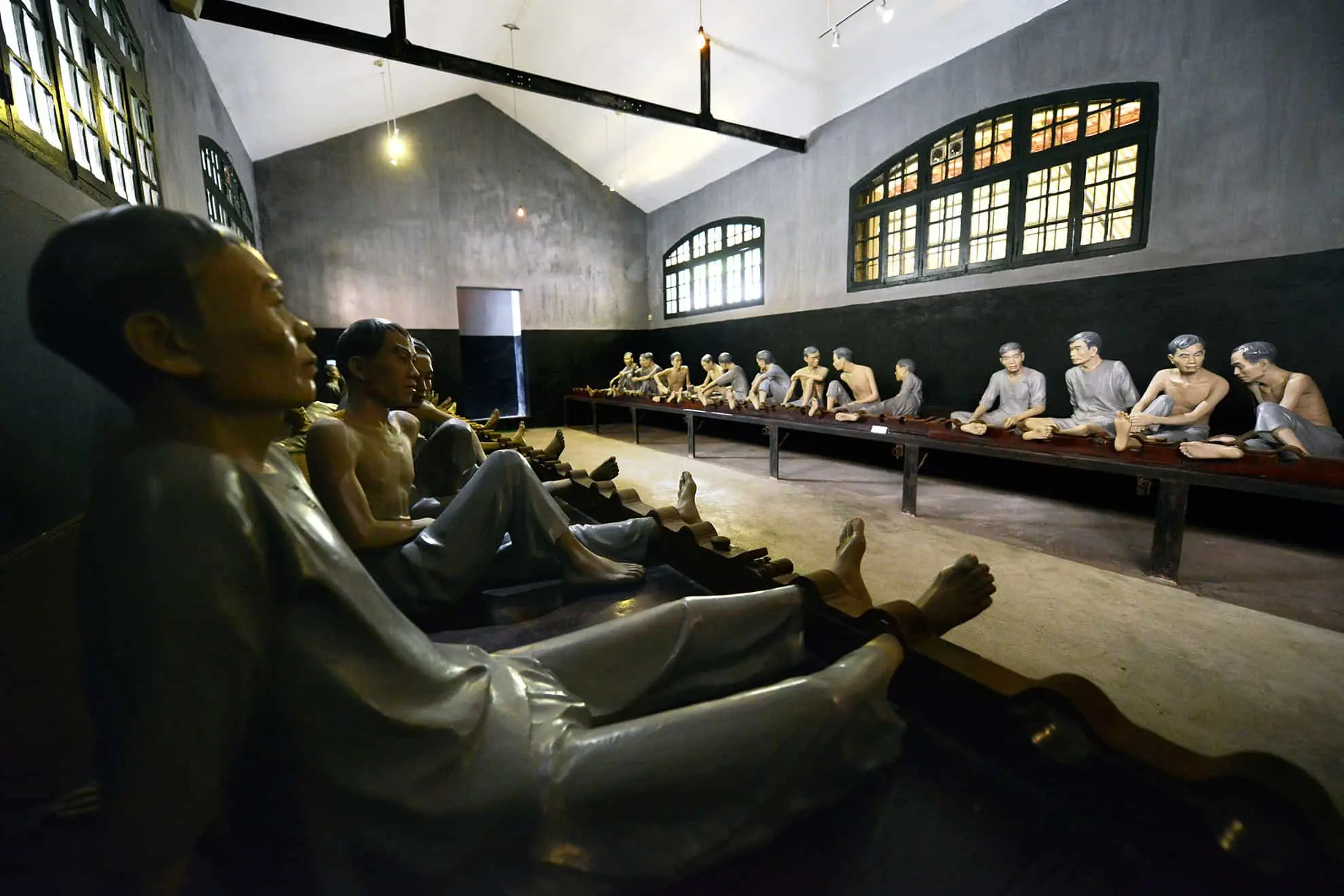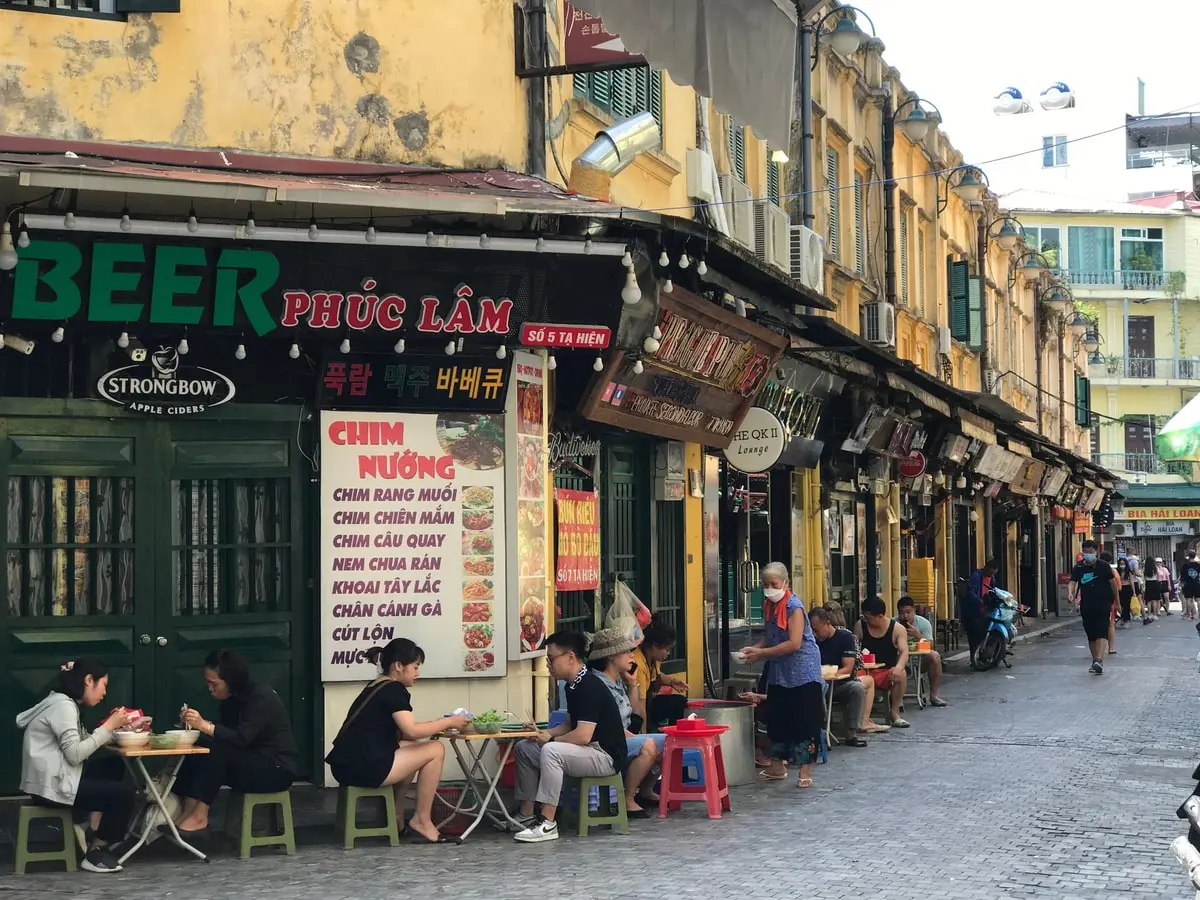Welcome to EssentialVietNamtravel.com‘s guide to one of Vietnam’s most iconic landmarks. The Independence Palace Saigon Vietnam stands as a powerful symbol in Ho Chi Minh City. This building, also known by its official name, Reunification Hall, is more than just a structure; it is a witness to history. It played a central role in the events that shaped modern Vietnam, particularly during the Vietnam War.
Located prominently in the heart of the city, it remains a significant Historical Landmark and a major Tourist Attraction in Southeast Asia. Understanding its past is key to appreciating its present significance. This guide provides essential information for anyone planning a visit or seeking to learn more about this pivotal site in Vietnam. We aim to offer factual details and practical steps for your exploration.
The History and Significance of Independence Palace (Reunification Hall) in Saigon During the Vietnam War

The ground where the Independence Palace stands holds deep historical resonance for Vietnam. Before the current structure, the French colonial government built a residence here in 1868, initially called Norodom Palace. It served as the home for French Governors-General. This earlier palace represented Colonialism and external Power, a stark contrast to the building’s later identity. Following the Geneva Accords in 1954, which marked the end of French rule and the temporary Division of Vietnam, the palace became the official residence of the President of South Vietnam, Ngô Đình Diệm. He renamed it Independence Palace.
However, this first palace faced destruction. In 1962, dissident pilots bombed the structure in an assassination attempt against Diệm, causing severe damage. This event led to the decision to demolish the remaining structure and build anew.
The commission for the new Presidential Palace was awarded to the respected Vietnamese architect Ngô Viết Thụ. Construction began in 1962, and the impressive building was completed in 1966. Ngô Viết Thụ designed the palace with a blend of traditional Vietnamese motifs and Modernist architectural style, aiming to create a structure that reflected national identity and contemporary aesthetics. It was designed for its Function as the Presidential Residence and Workplace for the head of the Republic of Vietnam.
President Nguyễn Văn Thiệu lived and worked here for much of the Vietnam War, making critical decisions within its walls. The building became a potent symbol of the South Vietnamese government. Its very existence represented the political divide of the nation during those turbulent years. It was the center of political power for South Vietnam, hosting state functions, receiving foreign dignitaries, and serving as the nerve center for the government’s operations.
The most defining moment in the palace’s history occurred on April 30 1975. This date marks the Fall of Saigon and the definitive end of the Vietnam War. North Vietnamese Army tanks dramatically crashed through the main gates of the Independence Palace. Tank 843, now famously displayed on the grounds as an Iconic Tank 843 Display, was among the first to enter. This powerful image was broadcast worldwide, signifying the collapse of the South Vietnamese regime and the victory of the North Vietnamese forces.
The event marked the end of decades of conflict and the beginning of national reunification. It was a pivotal moment, transforming the building from a seat of South Vietnamese power into a symbol of a unified Vietnam. It played a pivotal role in the end of the Vietnam War.
Shortly after these events, the provisional government renamed the building Reunification Hall. This new Name reflected the national aspiration and the reality of a single, unified Vietnam. The Independence Palace, or Reunification Hall, now Symbolizes National Reunification. It stands not as a reminder of Subjugation or Division, but as a testament to the country’s resilience and eventual unity. Its Historical Significance cannot be overstated. It IsA (Historical Landmark) recognized internationally.
Visiting the palace offers a direct connection to Vietnamese History and the complexities of the Cold War History in Southeast Asia. It holds symbolic value for Vietnam, representing the end of a long struggle and the dawn of a new era. It is a significant historical site whose past continues to shape the nation’s identity. EssentialVietNamtravel recommends understanding this history before your visit to fully grasp the weight and importance of the site.
Exploring Inside the Presidential Palace: Architecture and Key Rooms of Reunification Hall

Stepping inside the Independence Palace, officially Reunification Hall, is like stepping back in time. The Architecture, meticulously designed by Ngô Viết Thụ, offers a fascinating glimpse into 1960s design and Vietnamese symbolism. The building’s overall layout is said to resemble the Chinese character for “good fortune,” reflecting traditional influences, possibly including Feng Shui Design Elements considered by Ngô Viết Thụ Architectural Design. The exterior features clean lines characteristic of the Modernist architectural style prevalent at the time, yet incorporates elements like bamboo-inspired sections on the facade. The palace was built between 1962 and its Year Completed, 1966.
The interior is remarkably preserved, maintaining much of its appearance from before 1975. Visitors can explore multiple levels, each serving a distinct Function during its time as the Presidential Palace. The ground floor features spacious halls designed for official receptions and meetings. You can walk through rooms where diplomats were entertained and national strategies were discussed. The furnishings, carpets, and decor largely reflect the tastes of the era, providing an authentic atmosphere. Exploring these Preserved 1960s State Rooms offers insight into the official life conducted here. EssentialVietNamtravel advises taking your time in these areas to observe the details.
Moving to the upper floors, you encounter the private quarters and working spaces of the president. The Key Room is undoubtedly the Presidential Office, where President Nguyễn Văn Thiệu conducted state affairs. Nearby are reception rooms, entertainment areas including a private cinema, and family living spaces. One striking feature is the Rooftop Helipad. This helipad was intended for emergency evacuations and offers panoramic views of the surrounding area today. Its preservation speaks to the Helipad Structural Integrity maintained over the decades.
Exploring these State Rooms provides a sense of the dual nature of the building: both a state headquarters and a home. The Original Furnishing Provenance adds to the authenticity, making it feel as though the occupants only recently departed.
One of the most compelling sections of the palace lies beneath the ground: the Underground Bunker. This multi-level command center was built for protection and continued operations during attacks. Descending into the bunker reveals a network of tunnels and rooms equipped with period communications technology, maps, and operational equipment. You can see the war room, complete with Specific War Room Maps still displayed, where military strategies were coordinated.
The Bunker Communications Systems, though now silent, offer a chilling reminder of the constant state of alert during the Vietnam War. The atmosphere here is distinctly different from the grand halls above, offering a stark look at the realities of wartime leadership. What to see independence palace ho chi minh city must include this bunker experience. It highlights the building’s critical role beyond state ceremony. The Architectural Design extends even to this subterranean level, prioritizing safety and functionality under duress.
Visiting Independence Palace in Ho Chi Minh City’s District 1: Location, Hours, and Entry

Planning your visit to the Independence Palace is straightforward. The palace boasts a prominent Location in the center of Ho Chi Minh City, Vietnam. Specifically, it is situated in District 1 Ho Chi Minh City, the city’s main administrative and commercial hub. Its official Address is 135 Nam Ky Khoi Nghia Street, District 1, Ho Chi Minh City. This central location makes it easily accessible from most parts of the city.
The palace grounds occupy a large area bordered by Nam Kỳ Khởi Nghĩa Street, Huyền Trân Công Chúa Street, Nguyễn Thị Minh Khai Street, and Nguyễn Du Street. The spacious front lawn faces the main roundabout, providing a clear view of the building as you approach. Nearby green spaces like Tao Dan Park offer pleasant areas to relax before or after your visit.
Knowing the operational times is crucial for planning. The independence palace saigon opening hours are generally consistent, but EssentialVietNamtravel advises checking the official website or contacting them directly before your visit, as hours can occasionally change for state functions or holidays. Typically, the palace is open to the public daily. The usual opening times are from 8:00 AM to 11:00 AM and from 1:00 PM to 4:00 PM. There is a lunch break when entry is closed. Arriving early, especially during peak tourist season, is recommended to avoid larger crowds and allow ample time for exploration. Allocate at least two hours to comfortably see the main building, the bunker, and the grounds.
Gaining entry involves purchasing a ticket. Information regarding the independence palace saigon entrance fee is available at the ticket booths located near the main gate. Prices are reasonable and typically listed in Vietnamese Dong (VND). There might be different fees for adults and children, and potentially separate tickets if you wish to hire an audio guide or join a guided tour. This is a Public Access site, managed as a Historical Monument and Museum. The entrance fee contributes to the upkeep and preservation of this important site. You can usually buy tickets directly upon arrival (Transactional intent). Ensure you have local currency, although card payments might be accepted.
The Tourist Experience is generally self-guided, allowing you to explore at your own pace. Information panels in Vietnamese and English are available in most key areas. Audio guides are often available for rent in various languages, providing more detailed context about the rooms and history. Guided tours might also be offered at specific times. Remember to dress respectfully, as it is a significant historical site. Photography is usually permitted in most areas, but check for any specific restrictions.
The palace is a major part of Ho Chi Minh City Tourism, often included in city tours alongside other Nearby Landmark locations such as Notre Dame Cathedral Saigon, the Central Post Office Saigon, Ho Chi Minh City Hall, and the bustling Ben Thanh Market, all within reasonable distance in District 1. Planning your visit involves considering location, timing, and entrance procedures for a smooth experience.
The Fall of Saigon at Independence Palace: Witnessing History and Nearby Vietnam War Sites

The Independence Palace is inextricably linked to the final moments of the Vietnam War, specifically the historical event known as the Fall of Saigon. On April 30 1975, the world watched as North Vietnamese tanks breached the palace gates, effectively ending the long and devastating conflict. Visiting the palace allows you to stand on the very ground where these dramatic independence palace saigon war events unfolded. The image of Tank 843 crashing through the wrought-iron gates remains one of the most enduring symbols of the 20th century, marking the end of the Republic of Vietnam and the start of the country’s reunification process. PartOf (Vietnam War History) is intrinsically linked to this building.
Today, replicas of the tanks involved, including the famous Tank 843, are displayed prominently on the palace lawns. This Iconic Tank 843 Display serves as a powerful, tangible reminder of that historic day. Seeing these machines provides a visceral connection to the events. Inside the palace, particularly in the bunker complex with its war room and communications equipment, you gain a deeper appreciation for the intensity and gravity of the final days leading up to the Fall of Saigon Events.
The preserved state rooms also evoke the era, allowing visitors to imagine the final hours of the South Vietnamese government within these walls. It is a place where history feels palpable, offering more than just a standard museum visit; it offers a chance to reflect on the profound changes that occurred here.
Understanding the full context of the Vietnam War enhances a visit to the Independence Palace. EssentialVietNamtravel strongly recommends pairing your visit with a trip to the nearby War Remnants Museum. Located just a short distance away, also in District 1, the War Remnants Museum offers a comprehensive, though often harrowing, perspective on the war from a Vietnamese viewpoint. It displays military equipment, photographs, and exhibits detailing the conflict’s impact on the country and its people.
Visiting both sites provides a more complete understanding of the historical narrative. Seeing the palace where the war ended, followed by the museum that documents its course and consequences, creates a powerful and educational experience.
The Independence Palace Saigon Vietnam stands today not just as a relic of the past, but as a Historical Monument dedicated to peace and reunification. It is a place for reflection on the costs of war and the importance of reconciliation. Its transformation from Presidential Palace to Reunification Hall mirrors Vietnam’s own journey from conflict and Division to unity.
For anyone interested in Vietnamese History, Cold War History, or simply understanding the significant events that shaped Southeast Asia, a visit is essential. It allows you to witness the physical setting of a pivotal historical moment and consider its lasting legacy. The palace, along with the War Remnants Museum, offers critical insights into the Vietnam War and its conclusion right in the heart of Ho Chi Minh City.
Disclaimer: EssentialVietNamtravel.com provides this information based on available data. Opening hours and entrance fees can change. Please verify current details before your visit.



